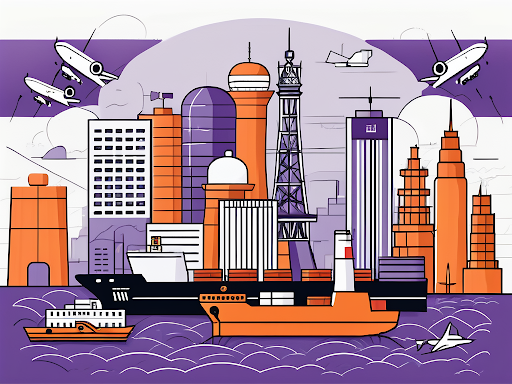Every year, millions of packages traverse the globe, and China is one of the leading destinations for international shipping.
Understanding how much it costs to ship a package to China is crucial for both businesses and individuals. The price depends on factors such as the shipping method, package weight, and delivery speed.
This article intends to discuss the following:
- Different costs of a package shipment to China
- Factors that affect shipping costs to China
- Some tips to reduce the shipping costs
Table of Contents
ToggleExplore Shipping Costs and Methods to China
Shipping costs to China vary based on the shipping method, speed, and weight of the package. To help you make an informed decision, here’s a breakdown of the common options and factors that impact shipping rates.
Standard International Shipping Costs
For small packages, standard international shipping is the most affordable option, typically costing between $20 – $50. This method is best for non-urgent deliveries.
- Cost: $20 – $50 for packages up to 5 lbs
- Delivery Time: Slower but economical
- Ideal For: Non-urgent, budget-friendly shipping
Express Shipping Costs
If you need faster delivery, express shipping is the better choice, though it comes at a higher cost, ranging from $50 – $150.
- Cost: $50 – $150, depending on weight and delivery speed
- Delivery Time: Faster, ideal for urgent shipments
- Ideal For: Time-sensitive deliveries
Freight Shipping Costs for Larger Packages
For larger shipments or bulk cargo, freight shipping is often necessary. Freight to China typically starts at $2,000+, especially for large quantities of goods.
- Cost: Starting at $2,000 for heavy or bulk shipments
- Delivery Time: Longer, depending on the method (air or sea freight)
- Ideal For: Large-scale business shipments or heavy cargo
Factors Influencing Shipping Costs to China
The cost to ship a package to China depends on several factors, including:
- Weight and Dimensions: Heavier and larger packages naturally incur higher costs.
- Shipping Method: Some shipping methods provide quicker delivery but are more expensive.
- Destination: Shipping to major cities like Beijing or Shanghai can be different than more remote areas.
- Time of Year: During peak seasons like Chinese New Year, prices might soar due to increased demand.
Understanding these variables can significantly impact your budget and stress levels when sending a package to the Far East.
Additionally, customs regulations can also play a pivotal role in determining costs. Each country has its own set of rules regarding what can be imported and the associated duties or taxes that may apply.
For instance, certain items may require special permits or may be subject to additional fees, which can add to the overall shipping expense. Thus, it’s advisable to research the specific customs regulations for China to avoid any unexpected costs.
How Package Size and Weight Affect Shipping Cost to China
The size and weight of your package play a pivotal role in determining shipping costs. Shipping isn’t merely about brute weight; rather, dimensions and overall size are equally important. So, it is crucial to accurately calculate the dimensional weight for your shipment.
Dimensional Weight Pricing
Dimensional weight pricing calculates shipping costs based on the package’s size (length x width x height), not just its weight. Larger, lightweight packages may cost more due to their volume.
- Compact Packaging Saves: Smaller packaging reduces costs.
- Divisors Matter: Carriers use a divisor (often 166 or 139) to calculate dimensional weight.
Understanding this can help you optimize packaging and save on shipping.
Oversize Package Charges
When shipping, it’s important to consider oversized package charges. Packages that exceed certain dimensions or weight limits may incur additional fees, which can vary significantly depending on the carrier.
- Extra Fees: Oversize packages often lead to higher shipping costs if they surpass standard size or weight thresholds.
- Carrier Guidelines: Each carrier has specific rules regarding what constitutes an oversize package, including length, girth, and weight limits.
To avoid these charges, measure and pack efficiently. Familiarizing yourself with carrier guidelines can help you steer clear of unexpected fees and ensure a smoother shipping process.
Packaging Materials and Their Impact
The packaging materials you choose play a key role in determining your shipping costs. So, it is very important to determine the best packaging for efficient shipping. Here’s how:
- Lightweight Options: Using materials like bubble wrap or air pillows can reduce the overall weight of your package, potentially lowering shipping fees.
- Balancing Protection and Weight: While lightweight materials help with cost, it’s crucial to ensure your items are well-protected. Sturdy boxes and proper cushioning can prevent damage, saving you from costly bulk returns or replacements.
- Carrier Discounts: Some carriers offer discounts if you use their branded packaging, which could lead to extra savings. It’s worth checking out these options when preparing your shipment.
By choosing the right materials, you can minimize costs while ensuring your items arrive safely.
Shipping Zones and Distance
Another critical factor affecting shipping costs is the distance between the origin and destination of your package. Shipping zones are determined by the distance a package travels, and as the distance increases, so do the costs.
Each carrier has its own zone chart, which can significantly impact your shipping expenses. For instance, shipping a package across the country may cost substantially more than sending it within the same city.
Understanding these zones can help you plan your shipping strategy more effectively, possibly allowing you to consolidate shipments or choose more economical shipping methods when sending multiple packages to the same area.
Additional Costs in Shipping to China
When calculating your total shipping cost, it’s easy to overlook many additional fees that can arise. Understanding these costs ahead of time can save you from the shock of unexpected charges.
Customs Duties and Taxes
When shipping to China, customs duties and taxes are based on the value and type of goods. Electronics often incur higher tariffs than clothing, for example. It’s important to:
- Check Regulations: Customs rules can change, so stay updated with local authorities.
- Classify Goods Correctly: Proper classification ensures you avoid overpaying or delays during customs clearance.
Accurate valuation and classification help avoid unnecessary costs and streamline the customs process.
Insurance and Tracking Costs
Additionally, consider purchasing insurance for high-value packages—as the old adage goes, “better safe than sorry.”
Tracking is also an add-on service provided by most carriers that offers peace of mind while your package travels across international waters. Just remember that both options can noticeably increase your shipping costs.
Furthermore, some insurance policies may have specific exclusions or limitations, so it’s wise to read the fine print carefully.
If your shipment contains fragile items, you might want to look into specialized insurance that covers damages during transit, ensuring that you are fully protected against potential losses.
Handling and Processing Fees
In addition to customs duties and insurance, handling and processing fees can also impact the total cost of shipping to China.
These fees are typically charged by the shipping carrier or a 3PL provider for the extra work required to prepare your package for international transport. This can include:
- Packaging and labeling: Ensuring your shipment is ready for overseas travel.
- Documentation: Completing the necessary paperwork for customs clearance.
Storage Fees
Storage fees are an often overlooked cost that can surprise shippers. These fees may be charged if your package is held at a warehouse or port for too long, often due to customs delays or if the recipient is unavailable to accept the delivery.
Here’s how to manage storage fees:
- Potential Causes: Delays in customs or the recipient not being available to receive the package.
- Accumulation: These fees can quickly add up and increase your shipping costs.
Simplifying Shipping Costs to China
Shipping a package to China involves many variables, from understanding pricing structures to making informed decisions about shipping methods and additional fees.
By optimizing your packaging, choosing the right delivery service, and staying aware of potential costs like customs duties and handling fees, you can ensure a smooth and cost-effective shipping experience.
Careful planning can help you avoid surprises and make the process more efficient. Safe and happy shipping!






